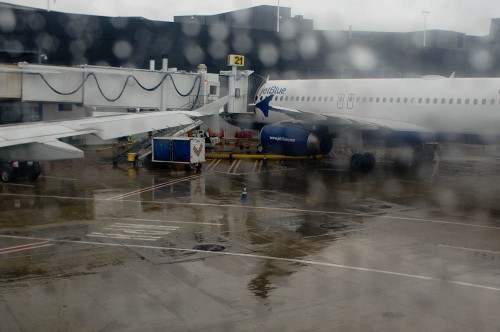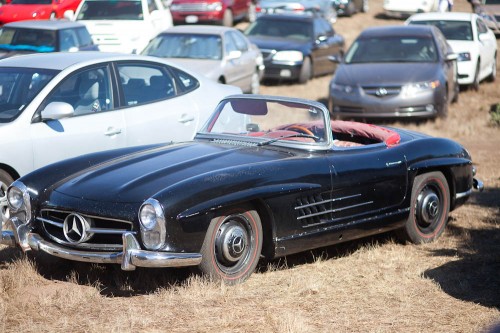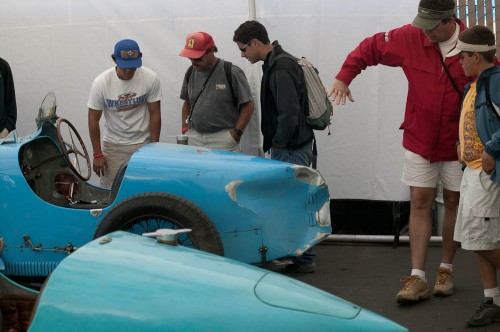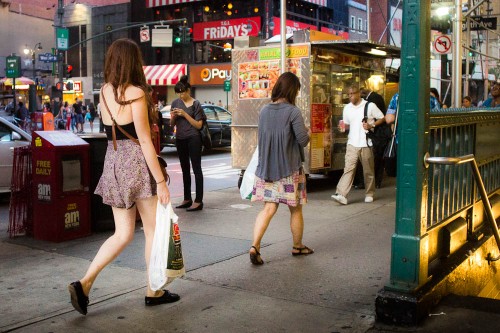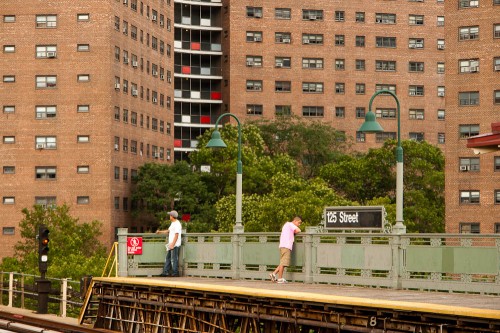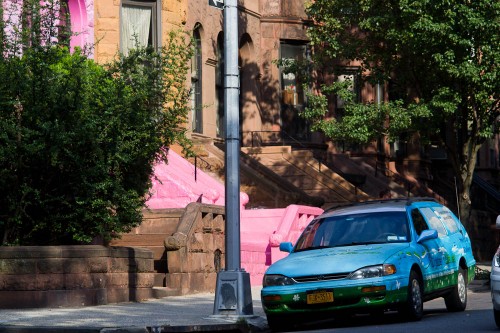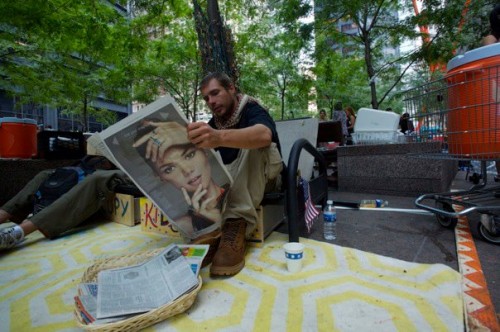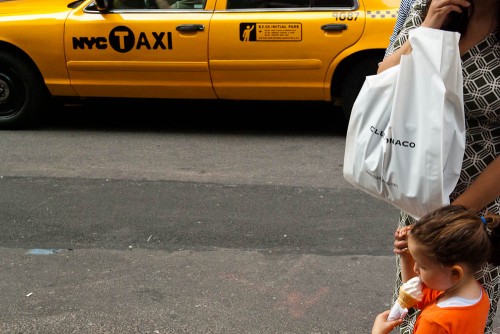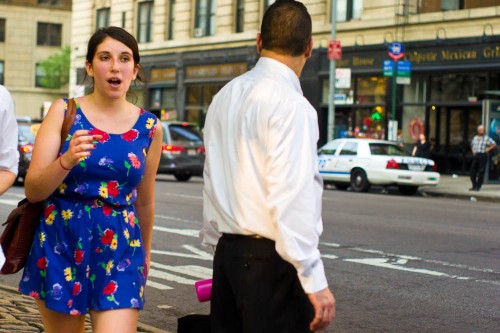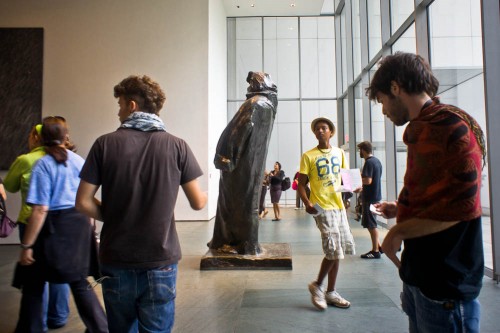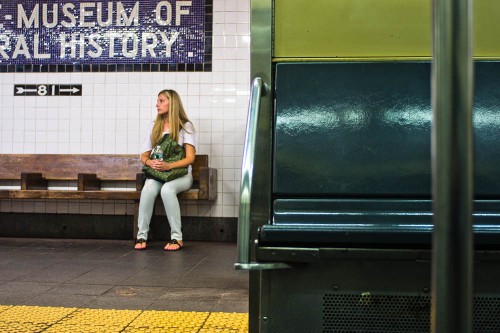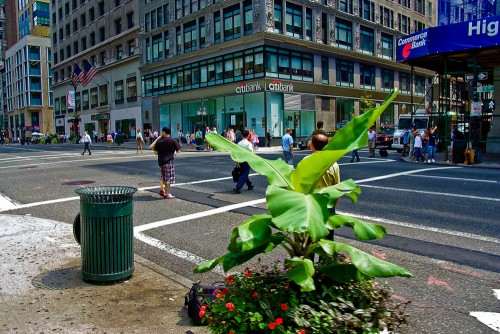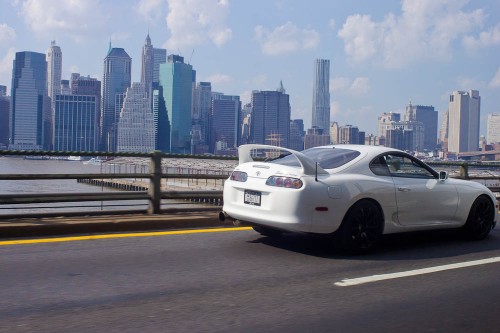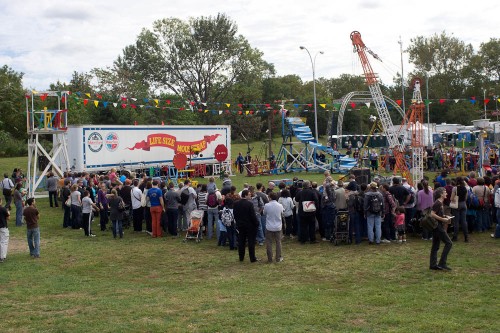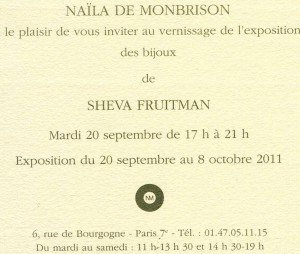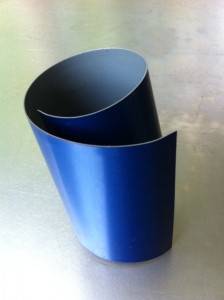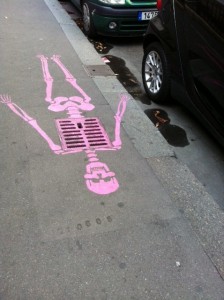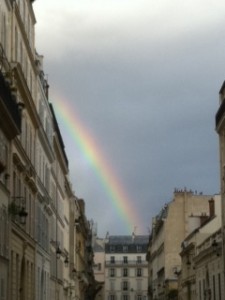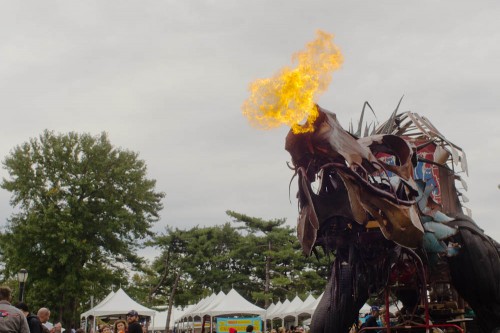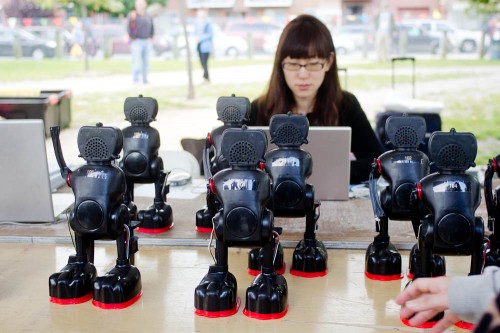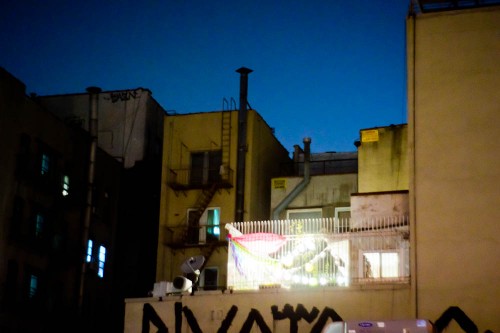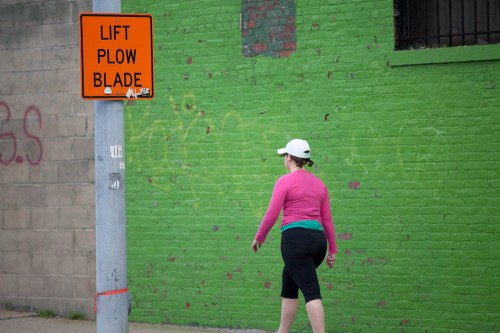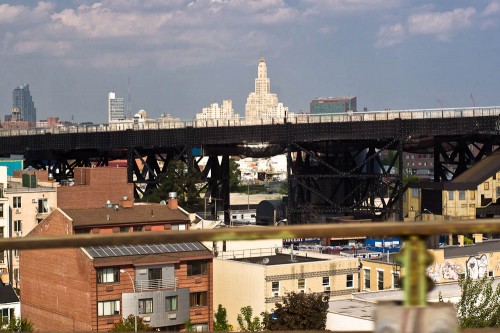All posts by admin
Thoughts on the Wall Street Occupation
I have a fantasy that Occupy Wall Street (OWS) will become something big, something special, and something really important.
Why?
Because this country needs an articulate and thoughtful dissident movement to help it find its way again.
Inspired by the Arab Spring of 2011, the movement is leaderless and yet its stance of discontent, non-violence and democratic idealism seems to resonate with many who are frustrated with the economic and political situation in our country.
OWS is for those who believe that our values are skewed. It is for those who believe that jobs, affordable housing, good education and healthcare should be a right not a privilege.
It is for people who are tired of the greed, entitlement, salaries, and bonuses of a small class of people who have more than everyone else.
Some complain that OWS doesn’t have a cohesive platform, a list of demands, or an identifiable leader or political candidate. I think, at least for now, that is one of its strengths. The amorphousness of it allows people like me to attribute to it everything we think would make this country better. If there was a platform, there would be a moment of, ah, I’m not sure I agree with that, or I don’t like that leader, or I can’t align myself with those beliefs.
In its current amorphous state OWS can contain multitudes and that’s a good thing right now.
I love that Zuccotti Park is like a little society (or maybe it’s like an Internet start up firm) with a reception area, a media zone, a medical area, a library, and a food area. Maybe they need a policy and/or branding department where strategists can help devise a cohesive message.
I love that there’s a daily schedule posted on the website with daily meetings and information about marches. For the organizers, social networking is second nature; they were born into it.
I love that the occupiers order pizza from a local pizzeria, and then use the pizza boxes to make sometimes witty signs.
I love that its young people. And elderly. And middle-aged.
For 17 days, the press seemed to be ignoring the “occupation” and treating it like a joke. On Saturday, many people (all ages and colors) joined the march and 700 were arrested on the Brooklyn Bridge and now the press seems to be attentive.
For now, OWS feels like the pulse of the city. It seems to, in some way, address the discontent and fear that’s been hovering just above the surface of life these past few years. Fear about the future, fear for our children’s future, fear for our ability to sustain ourselves in a hostile economic environment.
The people are speaking. And occupying, And dreaming that things can be different and better some time soon.
We’ll see what happens.
No Words Daily Pix by Hugh Crawford
Occupy Wall Street: 700 Arrested on Brooklyn Bridge
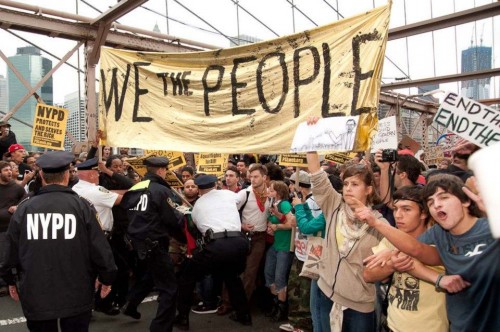
In the spirit of seeing for myself what’s been going on for the last 17 days with Occupy Wall Street, I took the subway into Manhattan to catch Saturday’s march scheduled for 3PM. At Liberty Street and Broadway I joined the marchers, who were chanting: “Banks got balied out, we got sold out.”
It was hard to tell how many people were marching but the west sidewalk of Broadway was packed with people of all ages and colors from Liberty Street up to the Brooklyn Bridge. There was a large police presence on the street side of Broadway keeping the marchers on the sidewalk, making sure they didn’t spill out into the street.
Chanting, “We are the 99%,” some of the marchers waved at the police, “thanks for keeping us safe.” When I accidentally walked into the street, a cop was quick to reprimand me, “Stay on the sidewalk, lady.” That happened more than once in the crosswalks.
The people who were marching near me were peaceful, friendly and excited to be part of this fledgling movement. One woman, a 43-year old unemployed teacher, came down from New Paltz this morning by herself.
“You can’t wait for other people, you have to do what feels right,” she told. me.
Recently she was laid off from her job as a teacher at a Sullivan County BOCES, a job she’d held for twelve years.
“This movement needs a PR campaign,” she told me. “We need a great slogan which sums up what it’s about.”
Despite the lack of a cohesive message, she felt drawn to the protest because of the dire economic situation and the high level of unemployment, she told me.
“I’d rather be working might be a good slogan. I should have made a sign. Maybe I’ll put it on a pizza box,” she told me.
Pizza boxes are an oft used material for signage at these Occupied Wall Street marches. I was unable to estimate how many people were marching but there must have been a few thousand. I was definitely in the middle of the march and there were many blocks of people behind me and above me.
“This is what democracy looks like” chanted the crowd as we crossed Broadway towards the Brooklyn Bridge walkway. There was a bottleneck as the crowd was funneled onto the bridge Some members of the march went right towards the Brooklyn bound car lanes. It was clear that those who went in that direction were preparing to get arrested because they would be blocking traffic. Some Occupy Wall Street organizers warned people not to go in that direction. “If you go there you will be arrested.” At first, the police seemed to be letting people onto the car lanes. But then a high level cop with a megaphone told people not to go there.
The bridge looked crowded with demonstrators at 4:00 p.m. I chose not to get on the bridge because I was worried that I might get trapped there or arrested. I had the feeling that the protesters had permission to use the bridge’s walkway. But I noticed a policeman with plastic handcuffs on his belt loops and that was an ominous sign.
By 6:30PM, I heard on WNYC radio that upwards of 75 people have been arrested on the Brooklyn Bridge and elsewhere. Brooklyn-bound bridge traffic is closed and it’s a terrible traffic situation at the moment.
Despite the outcome, the march had a spirited and peaceful quality. I spoke with Hank H., a 54-year-old man from Connecticut, who came down this morning because he feels betrayed by the Obama administration.
“He sold himself as the candidate of hope and change and then he betrayed us,” he said.
Of the Wall Street occupiers he said, “This group is reasserting the power to use public space in a democratic manner. That’s democratic with a small d.” As he walked away he told me to stay safe.
“Occupying public space is a metaphor for occupying political space,” he said as we parted.
And indeed, that’s precisely what was going on today in lower Manhattan.
It’s 9:24PM and the New York Times reports that 400 people have been arrested on the Brooklyn Bridge car lanes.
At 6:14AM the New York Times reports:
In a tense showdown above the East River, the police arrested more than 700 demonstrators from the Occupy Wall Street protests who took to the roadway as they tried to cross the Brooklyn Bridge on Saturday afternoon.
The police said it was the marchers’ choice that led to the enforcement action.
“Protesters who used the Brooklyn Bridge walkway were not arrested,” Paul J. Browne, the chief spokesman for the New York Police Department, said. “Those who took over the Brooklyn-bound roadway, and impeded vehicle traffic, were arrested.”
But many protesters said they believed the police had tricked them, allowing them onto the bridge, and even escorting them partway across, only to trap them in orange netting after hundreds had entered.
“The cops watched and did nothing, indeed, seemed to guide us onto the roadway,” said Jesse A. Myerson, a media coordinator for Occupy Wall Street who marched but was not arrested.
When Ceilings Fall: Old First Church on Rosh Hashanah
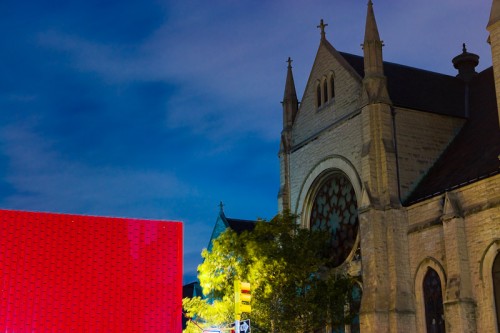 I received this email from Reverend Daniel Meeter of Old First Dutch Reformed Church in Park Slope detailing what happened when parts of the church’s ceiling crashed down just minutes before the start of a Rosh Hashanah service for a local congregation that was being held at the church.
I received this email from Reverend Daniel Meeter of Old First Dutch Reformed Church in Park Slope detailing what happened when parts of the church’s ceiling crashed down just minutes before the start of a Rosh Hashanah service for a local congregation that was being held at the church.
“The people of Congregation Beth Elohim plus a few Christian friends were gathering on Wednesday night for Erev Rosh Hashana at Old First, the service set to begin at 8p.m.
“Why a Chirstian church? For the third year? Because three years ago (just a day before Rosh Hashanah) the plaster from the ceiling of Garfield Temple came crashing down causing the synagogue to close and find another place for their large high holy day services. The congregation was welcomed to hold thier services in the church.
“But at 7:50 p.m., just before the people started to fill the pews, the same thing happened at Old First, some ceiling plaster came crashing down. No one was seated in that spot yet, thank God, so we spent half an hour cleaning up and composing ourselves, and cordoned off the center pews, and started the service.
“Much abuzz, much shaking of heads, “unbelievable,” many loving jokes: “You can do Christmas Eve at the schul,” etc.
“During the service, pieces of loose plaster obviously and ominously were hanging down. Early the next morning, pastor, rabbi and work crews gathered to try to shake the loose plaster down, from up above the ceiling in the cavernous attic of the church. Our custodians, Pedro and Abraham, climbed into the housing above the chandelier, and, blind to the underside of the ceiling beneath them, started banging on beams with poles. Crash, crash, chrash. More plaster came down than we expected, crashing into the chandelier, breaking three bulbs.
“I was up there, grieving and crying for my church, but we had to do it. We came to a stop where we could and strated cleaning up. We flipped the switches on the chandelier, and thank heaven, it lit. But there is a wound in our ceiling, and maybe still more loose pieces, which we can’t be sure of until we get a cherry-picker, which means thousands of dollars.
“So the pew remained cordoned off, the the service started on time, and the Torah was read and the shofar sounded. This year I did not sit among the people as I was running around and calling contractors, and I missed both of Rabbi Andy Bachman’s sermons, and finally the congregation left, and now, God help us, we have to figure out what we will do. Shana Tovah.”
No Words Daily Pix by Hugh Crawford
No Words Daily Pix by Hugh Crawford
No Words Daily Pix by Hugh Crawford
No Words Daily Pix by Hugh Crawford
Noam Chomsky on Occupy Wall Street
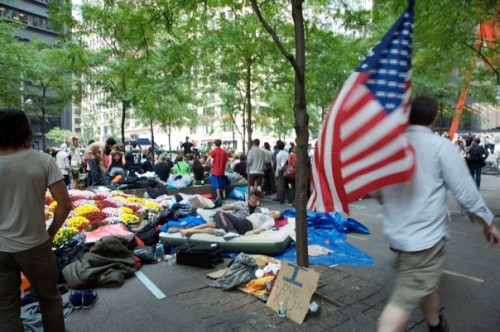 “Anyone with eyes open knows that the gangsterism of Wall Street — financial institutions generally — has caused severe damage to the people of the United States (and the world). And should also know that it has been doing so increasingly for over 30 years, as their power in the economy has radically increased, and with it their political power. That has set in motion a vicious cycle that has concentrated immense wealth, and with it political power, in a tiny sector of the population, a fraction of 1%, while the rest increasingly become what is sometimes called “a precariat” — seeking to survive in a precarious existence. They also carry out these ugly activities with almost complete impunity — not only too big to fail, but also “too big to jail.”
“Anyone with eyes open knows that the gangsterism of Wall Street — financial institutions generally — has caused severe damage to the people of the United States (and the world). And should also know that it has been doing so increasingly for over 30 years, as their power in the economy has radically increased, and with it their political power. That has set in motion a vicious cycle that has concentrated immense wealth, and with it political power, in a tiny sector of the population, a fraction of 1%, while the rest increasingly become what is sometimes called “a precariat” — seeking to survive in a precarious existence. They also carry out these ugly activities with almost complete impunity — not only too big to fail, but also “too big to jail.”
“The courageous and honorable protests underway in Wall Street should serve to bring this calamity to public attention, and to lead to dedicated efforts to overcome it and set the society on a more healthy course.”
Noam Chomsky
photos by Tom Martinez
No Words Daily Pix by Hugh Crawford
No Words Daily Pix by Hugh Crawford
No Words Daily Pix by Hugh Crawford
No Words Daily Pix by Hugh Crawford
No Words Daily Pix by Hugh Crawford
No Words Daily Pix by Hugh Crawford
The Community Bookstore Celebrates Its 40th
This was first published in Park Slope Patch, where I write a weekly column called, Around the Slope:
While I wasn’t able to attend the Community Bookstore’s 40th Anniversary reading at Old First Reformed Church on Saturday, I did drop by the after-party at the bookstore just in time to hear an employee, who was wearing a morning suit, read aloud from an official proclamation from the Brooklyn Borough President. It declared September 17, 2011 “Community Bookstore Day.”
“Whereas, it is a Brooklyn tradition to honor those organizations and individuals that display exemplary leadership and commitment to the people of their neighborhood and the borough…” the proclamation read.
Ezra Goldstein and Stephanie Valdez, the soon-to-be-official co-owners of the bookstore, were in jovial moods, sipping Brooklyn Brewery beer and eating “three-pie cake” with gloppy white icing and layers of cream and fruit.
Earlier in the day, more than a thousand people came to hear Park Slope literary royalty, Paul Auster, Jonathan Safran Foer, Nicole Krauss, Siri Hustvedt, Mary Morris and Haley Tanner, read poetry and fiction by their favorite authors from the last 40 years as they celebrated Brooklyn’s oldest independent bookstore and one of Park Slope’s most important informal community centers.
“This group of authors was chosen because they are very dedicated to the bookstore. Not only did they read but they had such nice things to say about the store,” Valdez told me at the after-party.
In 1971 when Susan Scioli, who owns the building and lives in an apartment above the shop, opened the Community Bookstore, Park Slope was just beginning its gradual transition from a working and middle-class Irish and Italian neighborhood to the gentrified and expensive place it is today. But in the ensuing 40 years, the store has had its financial ups and downs.
In 2001, Catherine Bohne, a longtime bookstore employee, bought the shop from Scioli. In 2005 the store nearly went out of business, but was mercifully saved, in part, by a group of individuals who each donated $10,000 and became part owners of the shop. But a devoted following among the Park Slope community also enabled the store to survive through the advent of Amazon and a Barnes and Noble just a few blocks away.
Goldstein, a former journalist and member of the Park Slope Civic Council, and Valdez, who used to organize readings and other events for the store, have been running the place for a year now and will officially buy the bookstore from Bohne in the next few weeks.
Standing at a long table with a white tablecloth, flower arrangements and wine and cheeses, I talked to a man who has just moved to Park Slope from Washington Heights, a real newbie.
“I’m so glad to have found this bookstore,” he said holding a stack of fiction he was about to buy. He was with a friend from Manhattan and we talked about why Park Slope is such a community with a capital “C.”
I went into my usual spiel about Park Slope being a college town without the college.
“That’s a good one,” he said.
I went on to offer a variety of theories: Maybe it’s the scale of the neighborhood and the fact that locals walk everywhere and enjoy standing on the street while talking with friends and neighbors. Or maybe it’s because there are many neighborhood meccas that provide people with places to hang out and feel connected with one another.
There’s the Community Bookstore, of course, where it’s always possible to have a conversation about a favorite author, an upcoming book group, or a hot topic pertaining to Park Slope or the world. But there is so much more.
There’s the famous (and infamous) Park Slope Food Coop with its 15,000 members, who are required to work in order to enjoy the bounty of organic food, and love to gripe about the overzealous rules and regulations of the place.
Continue reading The Community Bookstore Celebrates Its 40th
No Words Daily Pix by Hugh Crawford
Sheva Fruitman Jewelry Exhibit in Paris
If you are in Paris: Go see this tonight.
Sheva Fruitman, a talented photographer, jewelry designer, and an old friend of OTBKB, sends word of the opening of her jewelry exhibition in Paris tonight (Naila de Monbrison, 6 Rue de Bourgogne, Paris 75007).
Doesn’t that sound lovely? We so wish we could be there.
No Words Daily Pix by Hugh Crawford
No Words Daily Pix by Hugh Crawford
No Words Daily Pix by Hugh Crawford
No Words Daily Pix by Hugh Crawford
Postcard from the Slope: Healing Music by Czech Composer
Music is said to soothe the soul and on the tenth anniversary of 9/11, many New Yorkers opted to attend musical performances scheduled for the day of remembrance.
At the Dr. S. Stevan Dweck Center at the Brooklyn Public Library, The Sherman Chamber Ensemble played a program of elegiac music by 18thand 19th century composers, including Gabriel Fauré, Felix Mendelssohn, and Sergei Rachmaninoff.
“I didn’t want it to be all lugubrious. I wanted to combine memory with works of mourning and rebirth,” said Eliot T. Bailen, co-founder of the ensemble and cellist.
Bailen and his wife, flutist Susan Rothholtz, founded the Sherman Chamber Ensemble in 1983. They perform nearly two-dozen concerts a year, including a subscription series in Sherman and Kent, Connecticut.
To prepare for the concert, Bailen listened to radio interviews with survivors and family members who lost loved ones in the 9/11 attacks.
“I tried to keep my focus on the day and the meaning of it,” he said.
Probably the most unusual piece on the program was the “Piano Trio” by Bedřich Smetana (1824-1884), a Czech composer who was championed by Franz Lizst. Introducing the piece, Bailen told the audience “to listen to the contours of the music and the way that it alternates between beautiful melodies and turbulence.”
Smetana’s composition, he explained, was written after the death of the composer’s 4-year-old daughter.
“It was very specifically written after tragedy and that is why it is appropriate for today,” Bailen explained.
The performance of this piece with Bailen on cello, Michael Roth on violin and Margaret Kampmeier on piano, was virtuosic and highly emotionally as it sonically conveyed what Bailen called “the incomprehensible train of thought between anger and beauty and the heroic aspect of dying.”
The audience seemed moved by the music and cheered for the performers who appeared equally exhausted and exhilarated.
Continue reading Postcard from the Slope: Healing Music by Czech Composer
No Words Daily Pix by Hugh Crawford
Postcard from the Slope: Purple Doors Wide Open
Sunday morning, the tenth anniversary of 9/11, the purple doors of Old First Dutch Reformed Church were wide open for its memorial service just as they were in the days and weeks after September 11, 2001. And just like 10 years ago, there was an A-frame board on the sidewalk in front of the Carroll Street church with the words: “The church will be open for prayer and meditation until 5 p.m.”
Inside, an unusually large crowd listened to 10-year-old Lector Frank Adams reading from the book of Exodus. Hanging from the walls of the church, with its imposing Neo-Gothic architecture, beautiful stained glass windows and a grand chandelier, were pieces of white newsprint, some readable, some blurry. The prayer sheets were created by visitors in the days and weeks after the 9/11 attacks, when the church invited those who walked through its doors to write down their prayers.
What seemed like a typical Sunday service, with the singing of hymns and readings from Romans and Matthew, suddenly transitioned into a memorial when Reverend Daniel Meeter began his sermon.
“Let me tell you what you did 10 years ago,” Rev. Meeter spoke directly to the crowd of over 200 people. “While paper and debris was raining down on this neighborhood some of you knew right away that you had to open the doors of the church for sanctuary.”
He continued: “People came and sat looking for safety and shelter because you opened the door. You hosted them. You gave them music, candles and hung up sheets of newsprint and put out markers.”
While he spoke, I noticed a small boy a few pews ahead of me playing with a toy fire truck, which somehow seemed appropriate for 343 firefighters died while responding to the World Trade Center attacks, including 12 firemen from Squad 1 on Union Street.
Continue reading Postcard from the Slope: Purple Doors Wide Open
No Words Daily Pix by Hugh Crawford
Postcard From the Slope: Make Mine a Double
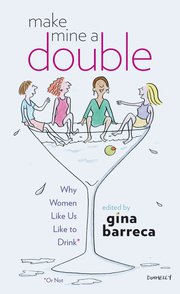 I’m thrilled as punch to be in an essay collection called Make Mine a Double, which was published TODAY. To make matters even merrier the collection, edited by Gina Barreca, is garnering great reviews like this one in Library Journal:
I’m thrilled as punch to be in an essay collection called Make Mine a Double, which was published TODAY. To make matters even merrier the collection, edited by Gina Barreca, is garnering great reviews like this one in Library Journal:
Make Mine a Double: Why Women Like Us Like To Drink (Or Not). Univ. Pr. of New England.Sept. 2011. c.192p. ed. by Gina Barreca. ISBN 9781584657590. $19.95. BEVERAGES
You don’t have to drink to enjoy this fine collection of short stories, poems, and essays edited by Barreca (English & feminist theory, Univ. of Connecticut; It’s Not That I’m Bitter…, or How I Learned To Stop Worrying About Visible Panty Lines and Conquered the World); the complex web of social, cultural, and political factors around women and alcohol will envelop both partakers and teetotalers. The selections run the gamut: Greta Scheibel recalls challenging norms by imbibing publicly in Tanzania; Sarah Rasher discusses negotiating the mores of drinking (and sexual preference) in Japan; Sarah Deming cleverly decries snobbishness and asks for a bartender who will simply make what’s ordered; Susan Campbell narrates her search for the perfect drink, which ultimately led her to soda; and Louise Crawford considers the volatile social cocktail of moms and booze. This reviewer swallowed the collection in a single, greedy gulp, but other readers may prefer to savor slowly the nearly 30 works by an impressive list of contributors (e.g., Amy Bloom, Jill Eisenstadt, and Wendy Liebman). VERDICT In lieu of an evening out with the intelligent, witty contributors, this laugh-out-loud funny, touching, thought-provoking collection is highly recommended.—Courtney Greene, Indiana Univ. Libs., Bloomington
Postcard from the Slope: My Hiatus
In June I quietly decided to take a hiatus from writing this blog. Thankfully, Hugh Crawford (No Words Daily Pix) and Eliot Wagner (Now I’ve Heard Everything) kept the flame burning.
My reasons for taking a break were manifold. In February of 2011 I began training to be a court reporter and my time for blogging was quite limited because I needed to focus on, well, court reporting. During a break from school in July I took a trip to Europe, which also limited my ability to blog.
But there were other reasons, too. After seven years writing for OTBKB I needed a break, a chance to regroup, rethink, and take a step back.
For almost seven years my passion for this blog was unlimited. People often asked: how do you do it, why do you do it, where do you find the time???
My answer was always the same: I love it. Indeed, I was truly passionate about blogging and OTBKB. It didn’t feel like work, it felt like joy. That’s why I started the Brooklyn Blogfest (to spread the blogging gospel). That’s why I was able to post at least once a day and many days much, much more (I couldn’t stop, I had so much to tell you all).
I also loved my beat and the wide scope of this blog. Yes, there was my hyper-local focus on Brooklyn and beyond, including its civics and urban life, art and culture, food, drink, shopping, parenting and street life. But I was able to bring so much of myself and my other interests to it, too.
This blog felt like an extension of me and it could contain whatever interested me, which I hoped would be of interest to you.
Last Spring, for the first time in a very long time, I just couldn’t find the time, the will, or the interest to blog. Because I was in school, OTBKB wasn’t the primary thing I was doing; I felt I had to step away to make room for the new. Stepping away was actually easier than I imagined it would be. I was spending more and more time in Manhattan and my non-stop attention to Brooklyn was waning.
But I also felt a great absence. I hardly knew myself when I wasn’t blogging. OTBKB was where I reckoned with the things that mattered to me, it’s where I set down my thoughts and feelings. Like a notebook, it was where I responded to the world around me.
Who was I without OTBKB? Some days I didn’t know.
And then on September 10, 2011, I felt moved to blog about the 10th anniversary. I’ve written many times on OTBKB about 9/11 anniversaries so it felt right that I should comment on this meaningful day.
Coming back to the blog was like finding an old friend. It felt familiar, yet different. There was much to say and yest, also a desire to find a new ways to connect. I didn’t want to get back into old habits; I wanted to find a new way of doing things.
The first post I ever posted was on September 18, 2004 almost exactly seven years ago. Soon after I started calling my posts, Postcard from the Slope.
I’m liking that idea that I will, once again, write these little postcards about what I’m thinking about. It feels right, it sounds good.
I’ll take it from there and see what happens. Thanks for listening.
An Open Letter from Rabbi Ellen Lippmann
Here is an open letter from Rabbi Ellen Lippmann of Kolot Chayeinu/Voices of Our Lives inviting the public to a special discussion the synagogue is sponsoring.
“On Thursday, September 15, at 7:30 pm, Kolot Chayeinu/Voices of Our Lives ( 1012 8th Avenue in Park Slope) is hosting an open Jewish conversation about cultural boycott of Israel. This is a controversial subject about which many people hold passionate opinions for, against and everything in between. Why have I and Kolot Chayeinu decided to host such an event?
“The simple answer is that we believe strongly that our Jewish community should be a place of open conversation about many subjects, including one that like this arouse deep passions. While the subject of boycott of Israel as a strategy seeking greater justice and peace there has been discussed widely in private individual and organizational settings, there have been few Jewish spaces willing to open doors to this conversation. We thought it was time for Kolot Chayeinu to open those doors.
“In our community, too, the discussion of boycott of any kind has been confined to the living rooms that housed a two-year Israel-Palestine reading group. But when asked last year about hosting a larger event on the subject, opinion in the community was split. What was not split, though, was the desire on the part of many Kolot members to have our congregation be a place of open discussion, regardless of any member’s opinion on the subject at hand. Therefore, when we were asked this year to host, we agreed — with the understanding that the event must be a truly open conversation, allowing strong voices pro and con. We insisted that members of our congregation be speakers on the panel along with those from other organizations. We insisted that because the subject was cultural boycott specifically, some speakers be artists; on the final panel, one is a filmmaker, one a musician. All panelists have thought long and hard about the subject of cultural boycott. Some stand firmly against it, some just as firmly for it. Others are still engaged in internal debate even as they share that debate with us.
“Ultimately, what is important in this conversation is that it is an open conversation for Jews, who rarely have this chance in a Jewish setting. This is not an evening of advocacy, people are not speaking to convince anyone to take a position. Rather, while the positions expressed are certain to be strongly stated, the evening is for talking and especially listening. After all, God gave us 2 ears and only one mouth! And we must ALL listen with respect to each other no matter our personal position or how violently we may agree or disagree with what is said. This is an evening for openness, honesty, careful listening, and deep thought.
“The conversation we are hosting on September 15 is unrelated to any others that are going on in the neighborhood or in the community. It is OUR conversation. The Kolot Executive Board would not have voted to host anything else, nor would I. I look forward to seeing you Thursday evening.”

